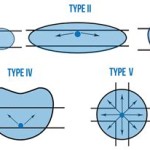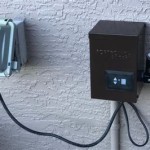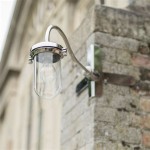Essential Aspects of Converting an Existing Outdoor Light to Motion Sensor
Outdoor lighting plays a crucial role in enhancing safety and security, while also adding aesthetic value to your property. Converting an existing outdoor light to motion sensor can bring several advantages, including increased convenience, energy efficiency, and enhanced security.
Here are the essential aspects of this conversion:
1. Type of Motion Sensor:
Motion sensors come in various types, such as passive infrared (PIR), microwave, and ultrasonic. PIR sensors detect changes in heat emitted by moving objects, whereas microwave sensors emit radio waves and detect changes in their reflection. Ultrasonic sensors, on the other hand, emit sound waves and detect any disturbances caused by motion.
2. Field of View and Sensitivity:
The field of view determines the area the sensor can detect motion within. It is essential to choose a sensor with a wide field of view to cover the desired area effectively. Additionally, the sensitivity of the sensor determines its ability to detect small movements. Adjust the sensitivity to avoid false triggers or missed detections.
3. Light Fixture Compatibility:
Ensure that the motion sensor is compatible with your existing outdoor light fixture. Some motion sensors require specific wiring or modifications to the light fixture, while others can be easily installed as a standalone unit.
4. Wiring:
Most motion sensors require electrical wiring to connect to the power source and the light fixture. Verify that you have the necessary wiring and electrical knowledge to perform this task safely. If you are not confident, it is advisable to consult an electrician.
5. Placement:
Choose the ideal placement for the motion sensor to maximize its effectiveness. Consider factors such as the direction of motion you want to detect, the field of view, and any obstructions or vegetation that may hinder sensor performance.
6. Settings and Adjustments:
Once the motion sensor is installed, configure its settings to suit your specific needs. Adjust the delay time, which determines how long the light remains on after motion is no longer detected. You may also need to adjust the sensitivity to minimize false triggers or missed detections.
7. Maintenance:
Motion sensors should be periodically checked and cleaned to ensure optimal performance. Inspect the sensor for any physical damage or dirt accumulation that may affect its detection capabilities. Clean the sensor lens regularly to maintain its sensitivity.
Conclusion
Converting an existing outdoor light to a motion sensor is a practical and beneficial upgrade that enhances safety, convenience, and energy efficiency around your property. By considering these essential aspects, you can select the right sensor and install it effectively to maximize its benefits.

Can You Add Motion Sensors To Existing Outdoor Lights Local Electrical Group

Can You Add Motion Sensors To Existing Outdoor Lights Local Electrical Group

Can You Add Motion Sensors To Existing Outdoor Lights Local Electrical Group

Can You Add Motion Sensors To Existing Outdoor Lights Local Electrical Group

How To Add Motion Sensor Outdoor Lights With Or Function Doityourself Com Community Forums

Kodo 120 Watt Equivalent Par38 Led Motion Sensor Flood Light Bulb Bright White 2 Pack 1003032202 The Home Depot

How To Add Motion Sensor Outdoor Lights With Or Function Doityourself Com Community Forums
Is It Possible To Add A Single Motion Sensor Set Of Outdoor Floodlights That Are Controlled By Two 3 Way Switches Quora

How To Wire Motion Sensor Occupancy Sensors

Zenith Motion Sensor Wiring Diagram Outside Lights To Handyman Wire Home Electrical







